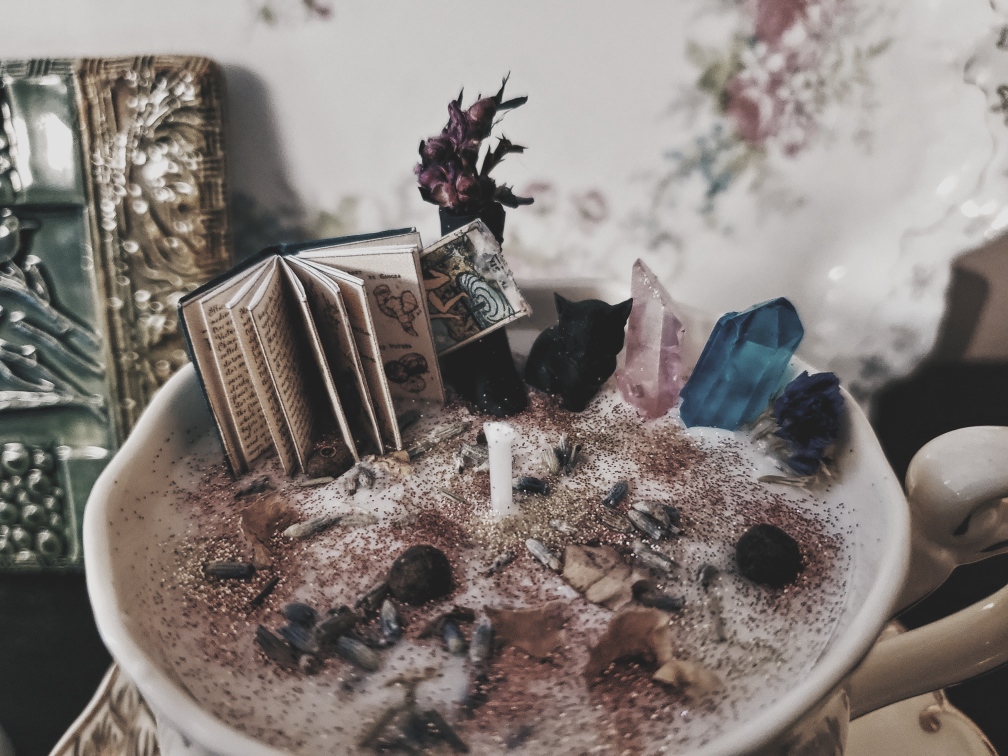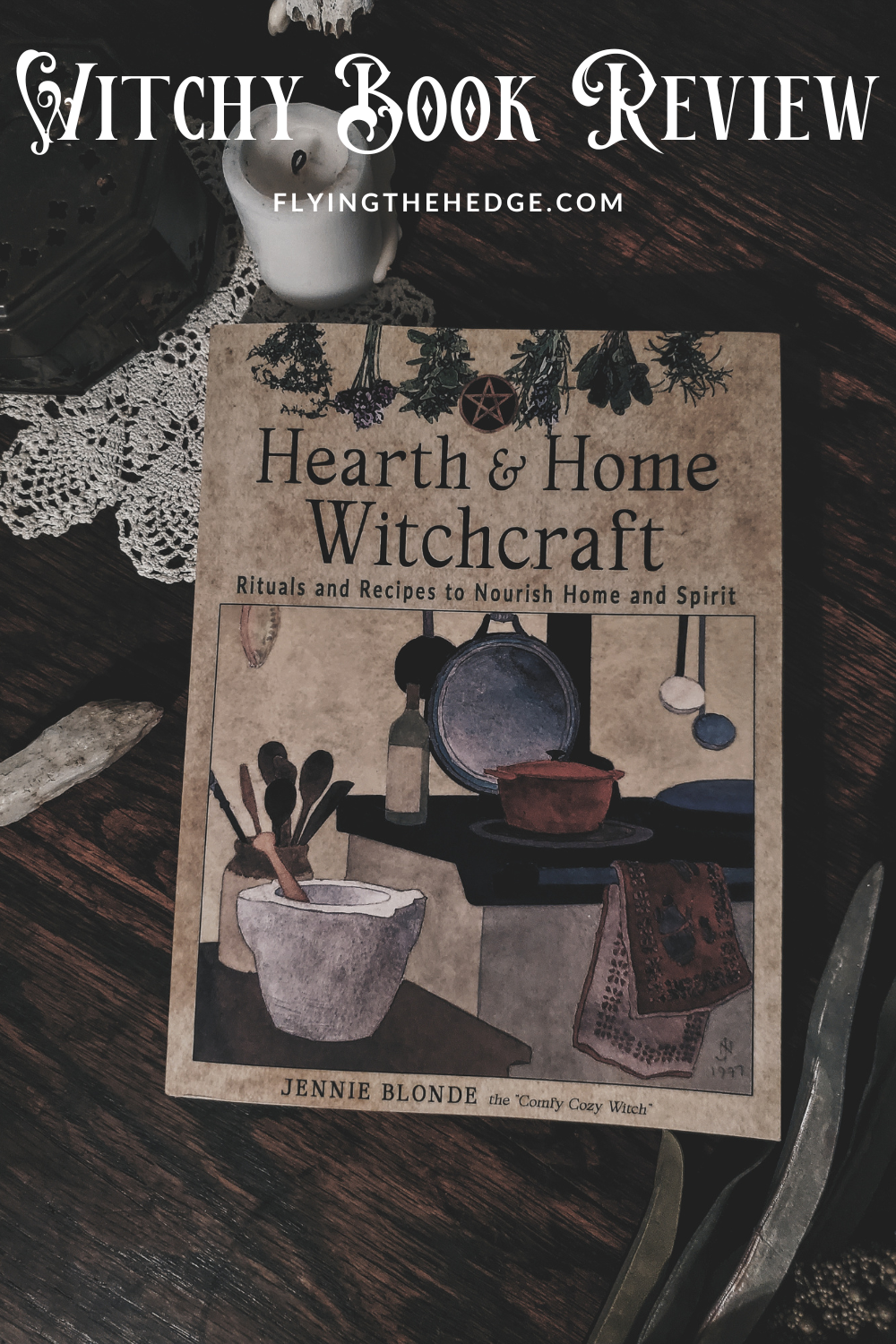A couple of weeks ago, Samantha from Vintage Chic Cauldron reached out to me, asking if I would be interested in trying one of her witchy charms or candles. I immediately responded with a resounding yes, and told her I would love one of her teacup spell candles. If it isn't apparent, I love tea and all things tea. I love tea-inspired magic, even more, so much that I wrote an entire book about it! Samantha sells an assortment of items, including witch bottles, charms, witch bells, witch ladders, spell candles, spoons, and custom services for all your witchy needs. Her assortment is absolutely stunning and potently magical as she crafts the items with intention, using the best ingredients, moon phases, and energy for the job.
When my candle arrived last week, I was blown away by the craftsmanship and beauty of it all. Samantha did not disappoint and this is honestly one of the best gifts I have ever received since starting this blog. First, the package was carefully packaged to ensure it arrived in one piece. Because of the nature of the candle and the vintage tea cup that was used, it had to be packaged carefully with bubble wrap, so not very eco-friendly, but the cup was undamaged and the spell ingredients remained intact. Decorating the top of the candle is a small herbology spell book, handpainted resin witch boot with dried flowers, tarot card, resin black cat, quartz, lavender, rose, allspice, and pink and gold glitter. Each of these items was specifically chosen for their magical correspondences or to better connect the spell to me. For example, the herbology spell book was added because I have a deep love for and knowledge of plants and their folklore while the lavender was added for peace and tranquility. The candle was poured into a beautiful teacup featuring pink roses and gold leaves and embossing. Samantha asked me about my color choices and did not disappoint with the color combo. My entire house is pink, green, and gold so this candle matches beautifully and I can't wait to display the cup.
With the candle came a complete set of instructions and a breakdown of the spell components printed on aged paper. This particular custom candle was created with the intention of drawing blessings to my home and life and was poured during the three days surrounding the last Full Moon. Each ingredient's magical correspondences and intentions are clearly explained, allowing novice witches to learn in the process. The instructions are clear and Samantha is sure to offer a variety of suggestions, whether you wish to burn the candle or not. I love that these candles don't have to be burned to be effective. Instead, they can be used as a decorative charm. I would suggest charging the candle each Full Moon if you intend to use it as a charm, which is not mentioned in the instructions. Something else to note is that you should remove the larger items on top of the candle before burning as well as they are a fire hazard. A blow drier or heat gun will melt the wax enough to safely remove them prior to burning. You can sit them beside the candle while it burns, either in a single sitting or multiple, to lend their strength to the spell.
I love the thought that went into creating this candle and I am thoroughly impressed with the final product. Just handling the box I could feel the magic within and when I finally unwrapped the candle, it felt warm to the touch, despite the packaging being cool. As an additional bonus, Samantha included a beautiful Halloween/Samhain-inspired tea candle featuring a bat, pumpkin, and orange glitter. I can't wait to include this candle on my Samhain altar this year.
If candles aren't your thing, Vintage Chic Cauldron features a variety of other products that are sure to delight and inspire. There really is something for everyone and I encourage you to check out what Samantha has to offer. Her items are reasonably priced, but please remember that handcrafted items will be more expensive than mass-produced items and one of the easiest ways to fight corporate capitalism is to support small, handmade businesses like Vintage Chic Cauldron. You can find Samantha's shop on Etsy.
If you liked this post and would like to support future content, please consider leaving a small tip in the jar.























